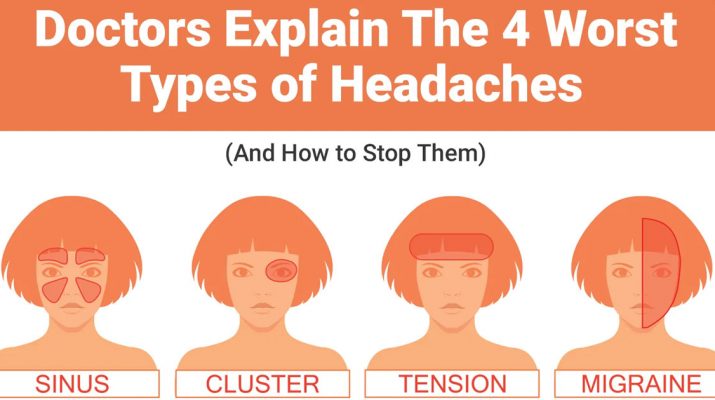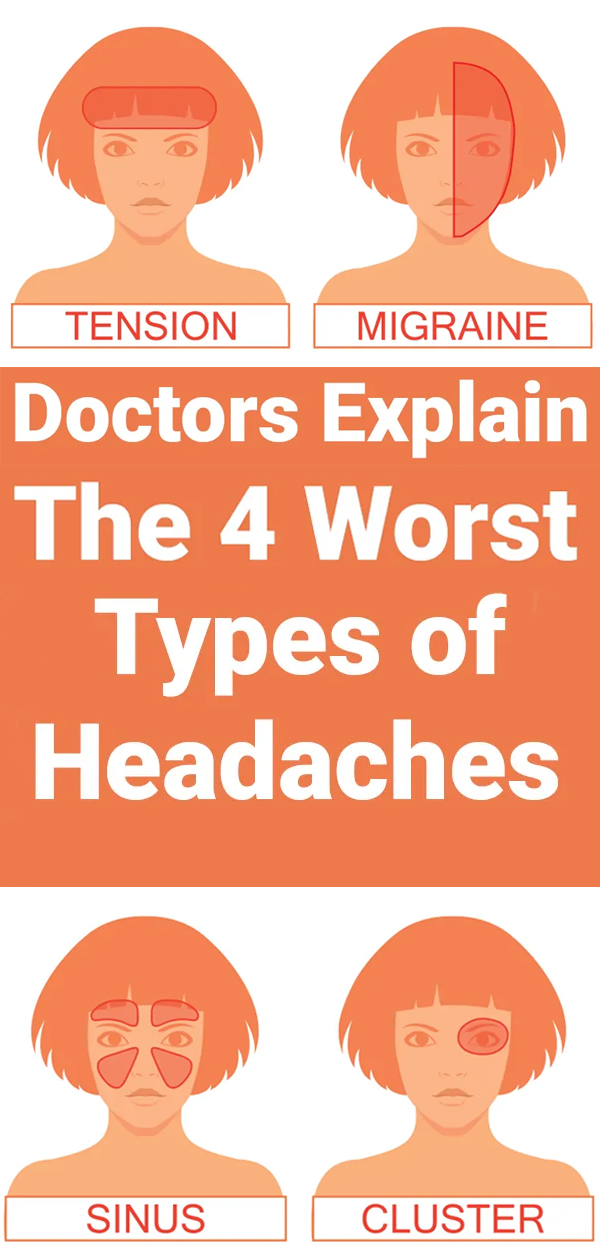” Headaches are extremely common. Nearly everyone has a headache occasionally. When they occur repeatedly, they are a symptom of a headache disorder.” ~ The World Health Organization
Do you know what causes a common headache? If not, you’re not alone.
The answer, according to WebMD, is somewhat complicated: nerves of your head muscles and blood vessels switch on and transmit pain signals to your brain. As to why these signals activate in the first place is perplexing to even the most brilliant minds.
Most of us experience what is called tension-type headaches, which fall into one of two categories: chronic or episodic.
Episodic headaches are the most common and occur sporadically. About 90 percent of all headaches experienced are episodic. Episodic headaches last anywhere from 30 minutes to a few hours. Chronic headaches are more consistent, and occur most days, lasting for days at a time. Because of their frequency, chronic headaches usually require some type of pain management strategy.
And then there are headaches that do not go away. This rare form of headache condition, which may last for years, is known as new daily persistent headache – and experts have no clue as to what causes them.
The most frequently experienced headaches produce somewhat moderate pain, particularly compared to the conditions that we’ll discuss in this article. Here, we’re going to talk about the five most painful types of headaches, including their symptoms, causes, treatment, and prevention.
Let’s get going!
Here Are The Worst Types Of Headaches:
1. Cluster Headaches
Cluster headaches may just be the most painful headache condition. Estimated to affect one in 1,000 people, cluster headaches target one side of the head and are excruciatingly painful. The pain feels burning and piercing, often located behind or around one eye.
Symptoms of cluster headaches include the drooping eyelid (on one side), reddening of the eye, swelling, sweating, flushing, and nasal congestion.
Scientists believe that cluster headaches tend to run in families. Triggers of cluster headaches may include alcohol or strong scents (e.g., perfume, household cleaning items, gasoline.)
Treatment for cluster headaches is multifaceted and includes painkillers, nasal spray, and the administration of pure oxygen.
2. Migraine
Similar to cluster headaches, migraines commonly target one side of the head. The pain produced by migraines is often moderate to severe and is often characterized as a throbbing and pulsating ache. Migraine headaches generally last between two and 72 hours.
Symptoms of migraine headaches include nausea, vomiting, blurred vision, lightheadedness, and sensitivity to light. A migraine episode may be preceded by an aura, or set of warning symptoms such as blind spots, light flashes, or tinging on one side of the face, arms, or legs.
Treatment for migraines includes painkillers, anti-nausea medications, and gluticosteroids. Prevention is highly important for migraine sufferers who know how to avoid common triggers.
3. Allergy Or Sinus Headache
Allergy and sinus headaches occur when cavities within the skull, called sinuses, becoming inflamed. Allergic reactions may spawn an allergy or sinus headache. Pain is most often located in the front of the head and sinus areas.
Symptoms of allergy or sinus headache include runny nose, fever, swelling of the face, and green and yellowish nasal discharge. Sinus infections are likely to produce sinus headaches as well.
It’s worth noting that migraines are often misdiagnosed as sinus headaches. Upwards of 90 percent of diagnosed sinus headaches are, in reality, migraines.
Treatment of allergy and sinus headaches involves nasal steroid sprays, antihistamines, over-the-counter (OTC) decongestants, and antibiotics.
4. Hypertension Headaches
Chronic hypertension, or high blood pressure, may produce a hypertension headache. Pain is often moderate to severe and is usually located on both sides of the head.
Symptoms of hypertension headaches include chest pain, vision changes, numbness or tingling of the hands or feet, and trouble breathing. As hypertension headaches are triggered by dangerously high blood pressure, they are considered a medical emergency.
Treatment of hypertension headaches varies, but generally involves something to monitor blood pressure. Beta-blockers, medications that lower your blood pressure, may be prescribed by the physician. OTC pain medications are suggested to ease short-term pain.
Prevention
Most of us will only ever experience the common, tension-type headache described earlier. As it turns out, professional advice pertaining to the prevention of both tension headaches and migraine-type headaches is (surprisingly) very similar!
For headaches both acute and chronic, mild and severe, the single most important advice is to avoid headache triggers, the most common being long-term stress, alcohol, excess caffeine intake, skipping meals, poor sleeping habits, and medication overuse.
Additionally, it is very beneficial to get adequate sleep and to exercise on a regular basis.


